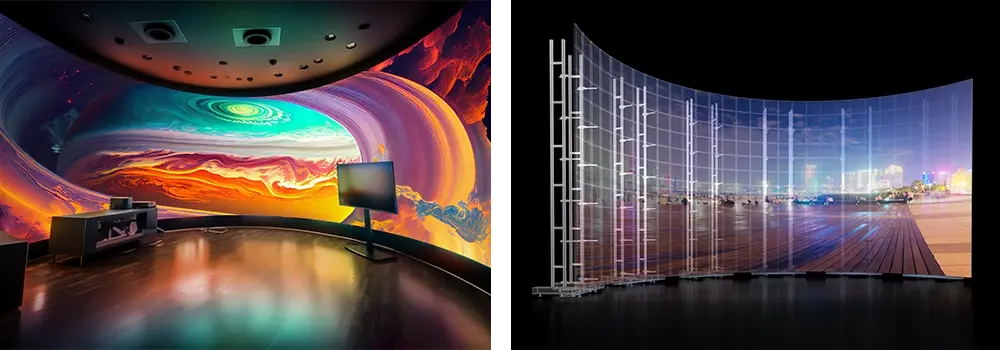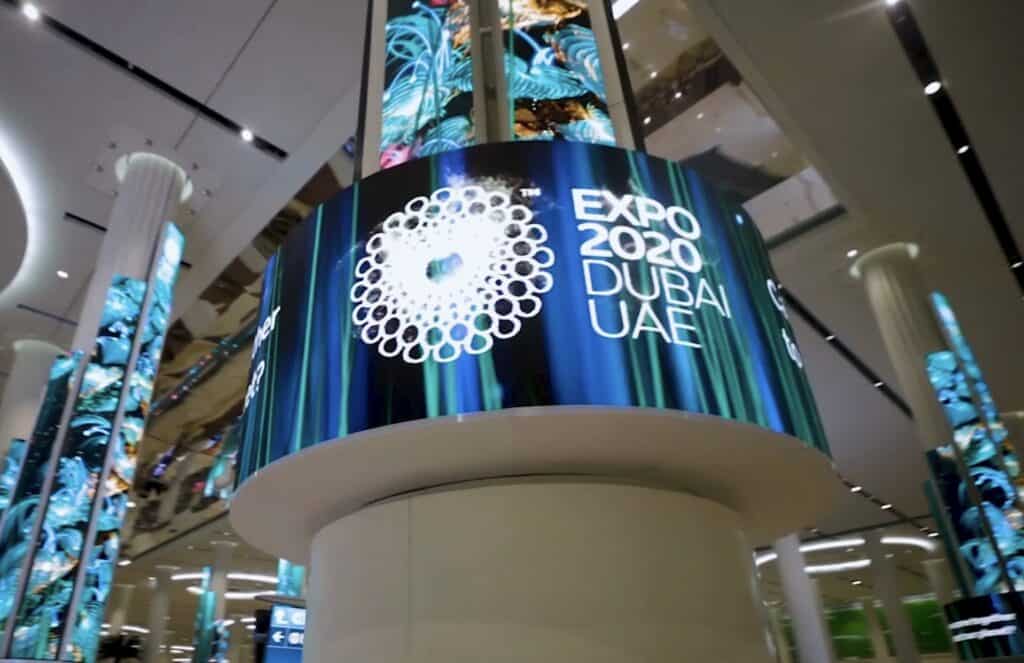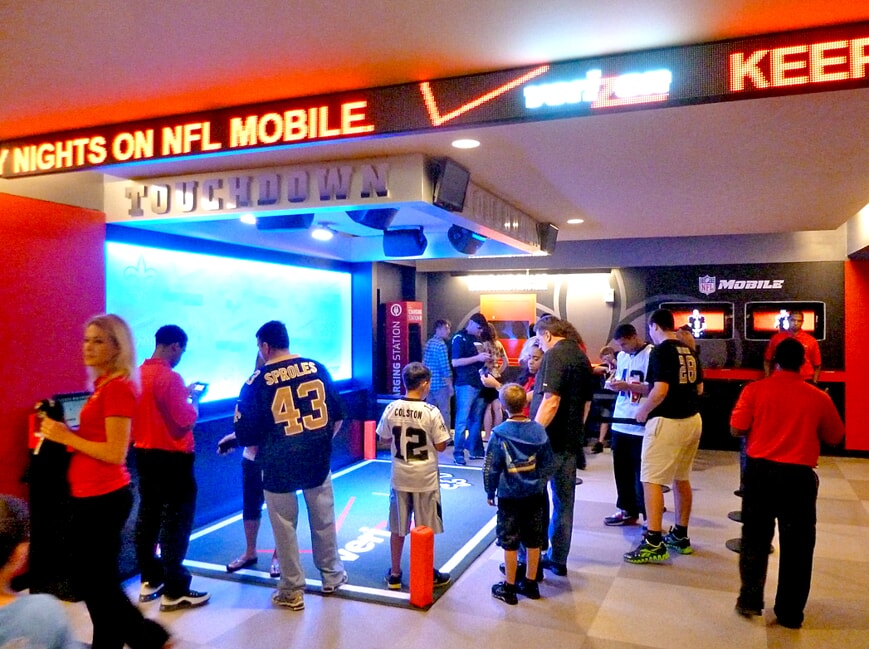Recommended Info For Choosing Cob Led Display
Wiki Article
When Looking At Led Displays, How Important Are The Pixel Pitch And Resolution?
Pixel resolution and pitch are incredibly crucial when it comes to looking into LED displays. Both of these factors directly impact the quality of detail as well as the overall impression created by the LED display. These two components are vital due to a variety of reasons.
1. Image Quality
Pixel Pitch: Pixel pitch is the distance from the middle of an LED's pixel to the middle of the next. Smaller pixel pitches mean that LEDs are closer separated, which leads to better resolution and a higher density of pixel. This results in more detailed, sharp images.
Resolution: The number of pixels displayed on the screen. It is usually expressed in the form of height and width (e.g. 2048x1080). Higher resolutions permit the display to display more detail. They also create an immersive experience.
2. Viewing distance
The pixel pitch is in direct correlation with the ideal distance to view. For displays that are observed from a short distance like screens used in indoor settings or for exhibitions or retail having a lower pixel pitch (and therefore a higher resolution) is essential to avoid a blurred image. If the display is viewed far enough away the display will not be affected that there are bigger pixels.
3. Content Versatility
Displays with smaller pixel sizes and higher resolutions can show a variety of content. These include high-definition videos, intricate graphics, and tiny text. This flexibility is essential for any application that requires high-quality content like digital signage, broadcasting studios or control rooms.
4. Cost Implications
While a smaller pixels pitch provides higher quality images however, it can also increase the price of the screen. Higher resolution screens are more expensive to produce because of the higher quantity of LEDs needed. Therefore, it's important to think about the screen's application, distance to view and budget when weighing the need for high-resolution screens.
5. Application Specificity
The importance of resolution and pixels will depend on the particular application.
Indoor Displays (for instance, 1.2mm – 2.5mm pixel pitch) Displays that are indoor require smaller pixels to provide high-resolution at close viewing ranges.
Outdoor Displays - May be larger in pixels (e.g. the pixels pitch of 4mm-10mm) since they are seen from a greater distance, and higher resolution might not be necessary.
6. The product's longevity and its upgradeability
As technology for display advancements the pixel pitch decreases, allowing for larger resolutions in smaller spaces. If you invest in a display with a pixel pitch that is optimal will lessen the necessity to replace frequently and maintain its efficiency for a long period of time.
Conclusion:
Pixel pitch is a key factor in an LED display’s performance. It affects image quality, the viewing experience, as well as content versatility. To ensure you select an LED display that is compatible with your expectations, you should consider the following aspects when looking into LED displays. Read the top smd screens for site info including wall screen, led board rental, church led wall, outdoor screen led, tv the wall, led screen transparent, outdoor led screen, led display device, led panel transparent, outdoor digital screens and more.

What Is The Importance Of The Refresh Rate In Researching Led Displays?
What is the importance of the Refresh Rate when you are researching LED Displays Refresh rates are an important factor to consider, especially if you are researching LED Displays that will be employed with dynamic content like live broadcasts, interactive apps or even. Here are some reasons why the refresh is important:
1. Image Smoothness and Clarity
Definition: The term "refresh rate" is the frequency per second (measured in Hertz, or Hz) that the display refreshes its image. Higher refresh rates create smoother motions and less flickering.
The importance. Displays that show videos or animations with speedy motion an optimum refresh rate of 3,840Hz is essential to ensure smooth and fluid motion. This is essential for digital signage, sports arenas, and concerts where a smooth and fluid visual experience improves the viewer's experience.
2. Flicker Free Performance
Flicker: Displays that have low refresh rates can cause noticeable flickering, especially when viewed from a slow-motion camera. Eye fatigue can result from flickering and strain, making it difficult to watch the display for prolonged periods.
Application: When the display will be recorded or recorded, such as in broadcasting studios or occasions, a higher refresh rate will minimize flickering, and will ensure that the video or image is captured without introducing artifacts.
3. Visual Quality in Various Lighting Conditions
Impact on Brightness - High refresh rates may also have an impact on the performance of the display in different lighting conditions. A high rate of refresh could, for example, keep the image quality intact in bright lighting and avoid any visible flicker, which can reduce the efficiency of the display.
Applicability: This feature is helpful in situations where lighting conditions change quickly or be difficult to regulate like outdoor shows and stage performances.
4. Content Compatibility
Synchronization: The refresh rate must be compatible with all source of content, such as cameras and video playback systems. The refresh rate of the display must match the content frame rate to avoid judder and mismatched frames. This can adversely affect the viewing experience.
Application in professional settings, such as television studios or large events, in which many sources of media are used, it's important that the frame rate of video content is equal to the rate of refresh. This will ensure seamless playback.
5. Get a better experience watching
Motion Handling: High-refresh rates are more adept at handling high-speed content, reducing blurring and delivering a clearer, more detailed image. This is particularly beneficial for broadcasting sports gaming, sports broadcasting, or any scenario where high-speed action is displayed.
Application: A high-refresh rate is ideal for venues that broadcast games, sports, or high-action content. The viewers can see each particular.
6. Reduce Eye Strain
Comfort Low refresh rates may cause eye strain over prolonged watching time, particularly when people are close to the display or when the content is being viewed for prolonged periods of time.
Application for retail, office, or public environments where people are likely to view the display over an extended time period A higher refresh rate could create an inviting and comfortable environment.
7. Performance of Rental and Staging Applications
The ability to adapt - for LED displays used to display different types of content in various environments A high refresh rate guarantees that the display can meet the needs of any event. This includes live shows, corporate presentations or multimedia presentations.
Application: In these environments where the screen must adapt to different content types and the needs of the audience High refresh rates provides versatility and reliability.
Conclusion:
The rate of refresh for LED displays is a crucial element that directly impacts visual quality and the comfort. It also impacts their flexibility. This is crucial for applications involving dynamic content, live events or settings that require the display to be viewed for prolonged periods. It is important to prioritize a high refresh rate when evaluating LED displays to ensure smooth, unflinching performance that will enhance the viewers' experience and meet the specifications of your application. Check out the best led rental screen for site tips including display device, led transparent screen, church led wall, digital display, flexible led screen display, outdoor screen led, led display screen, flexible led screen display, led wall tv, led transparent display and more.

In The Case Of Led Displays, What Is Compatibility? Content Management System (Cms).
Be aware of the consideration of the Content Management System and compatibility is crucial when researching LED displays. This is particularly true when applications require content to be regularly updated, managed in multiple locations and integrated into digital systems. CMS and compatibility is important for a number of reasons.
1. Easy Content Management
CMS Features A robust CMS allows for easy creation of, scheduling, and managing of content across LED screens. It provides an easy-to-use interface to upload content, organizing playlists and scheduling display time and display time, making it simpler to maintain fresh content.
The importance of a powerful CMS streamlines operations for businesses that need to update their information regularly, including retail shops or advertising networks. It also helps event venues. This cuts down on time and effort required to manage displays.
2. Controlling remotely and flexibility
Remote Management: A CMS that is reliable will allow you to update content from any place. This is essential for organisations that run multiple displays across various sites.
Application: In cases such as digital signage networks, corporate communications, or educational institutions where displays are spread across multiple locations remote management capabilities are essential to ensure timely and consistent content delivery.
3. Scheduling & Automation
Scheduling Content: A CMS that is equipped with scheduling tools enables users to prepare ahead and display relevant messages at right time. This can be useful to target particular audiences at specific time of the day or at particular events.
Automated updating of content saves time, and guarantees that the content is always updated. This is particularly beneficial for environments with high-speed internet, like hotels or airports.
The automation and schedule functions of the CMS can be vital to businesses that must manage content on a constant basis for example, large retailers as well as news broadcasters, transport hubs, etc.
4. Compatible with the existing systems
Integration: Compatible media players, software systems, and IT infrastructure are essential for seamless operation. CMSs that integrate with digital tools and platforms like tools for content creation and analytics tools, or CRM systems can add value.
Application: When digital signage is required to be integrated with another system like in smart cities or retail environments integrating customer data with the display, or large corporate networks the compatibility of the display will allow for smooth operation of the LED displays and maximize their effectiveness.
5. Scalability
Future Expansion A scalable CMS allows you to grow along with your business. It is a great tool to add new displays, expand into other sites, and to manage bigger content databases.
Applications: A CMS that is scalable is perfect for companies that are planning to expand. This could include retail chains, hotels, or multinational corporations.
6. Diverse Content and Support
Content Types Content Types - The CMS must be able to handle multiple content types, like videos, images interactive content, text. Being able to do this lets you produce content that is entertaining and adapted to the needs of your people who are watching it.
Application: Different types of content are supported in environments which require a variety of content. This includes entertainment venues, educational institutions or advertising networks.
7. Security and Access for Users
Role based access: CMSs that offer access control based on role permit different levels of access to be given to different users. This is essential in order to make sure that only employees who are authorized can make critical changes.
Security: To safeguard against unauthorised access that could result in dangerous or inappropriate content being displayed, it's vital to ensure that the CMS is equipped with security features that are robust.
Access and security options based on roles are crucial for businesses that have multiple users managing their content. This is the case for large corporations, universities and government agencies.
8. Real-time content updates
Live Content Integration: For some applications the capability to live-stream content or incorporate live feeds like social media or news, could be crucial. This is especially important in broadcasts, events, or other situations that require immediate content.
Application: In settings such as sporting arenas, live events, and news stations The real-time update of content guarantees that the audience is receiving the most up-to-date information. This also increases the relevancy and impact.
9. Analytics and Reporting
Performance Metrics. A good CMS must have analytics and reporting features that let you monitor the how your content performs. Understanding how viewers engage as well as the quality of content and ROI are vital for optimizing the content you create in the future.
Application: For business that rely heavily on data for making informed decisions, such as retailers, retailers, or public information systems Analytics and reporting capabilities are crucial to understanding and optimizing the impact and effectiveness of digital signage.
Conclusion:
A powerful CMS and a strong compatibility are the two most important elements of an effective LED display strategy. They facilitate efficient management of content, ensure seamless integration with current systems, as well as provide the capacity and flexibility required for a variety of and ever-changing applications. Prioritize the use of a CMS when researching LED displays. It should align with your requirements for operation as well as support a variety of content types, provide robust security and provide the tools required for efficient content delivery. These features not only enhance the functionality of the displays, but will also increase the impact of their display and increase the ROI. Follow the top rated lightweight led screen for site advice including display screen led, led display rental, led rental screen, transparent screen, video walls, wall tv led, led a board, led transparent display, led panels, outdoor led panel and more.
